The week at a glance
- Dead American Purple Gallinule in Devon
- American Coot still in Co Mayo
- Pacific Divers in Cornwall and Co Clare
- Lesser White-fronted Goose still in Norfolk
- Pied-billed Grebe and House Crow still in Co Cork
- Late report of Dusky Thrush in Greater Manchester
- Possible Australasian Gannet in East Yorkshire
The world of megas was a quiet one again this week, with a minor flurry of activity midweek from East Yorkshire. A seawatch from Flamborough Head (East Yorkshire) on 21st recorded both a Great Shearwater and also a possible Australasian Gannet, seen quite well on the sea for just five minutes. This is an extremely unusual record, with the species generally only ranging around the southern oceans. Birds have been recorded as vagrants to Mauritius (a dead bird in February 1997) and occasionally in Namibia, but not further north.
One other apparently new arrival wasn't, if you know what I mean, as the Pacific Diver at Finvarra Point (Co Clare) on 22nd–25th was probably the same returning bird as first seen in March–May 2010, completing a trio of returning birds this winter.
There were also more claims of outrageously rare birds from gardens. The first was a very belated report of a Dusky Thrush in Leigh (Manchester) for an hour on 8th December. Luckily the finder managed to get an excellent series of photographs, which only came to light this week. These didn't show some scruffy first-year, but a stunning adult male, much to the chagrin of many. This record comes on the back of another intriguing record at the end of last year, the Black-throated Thrush reported in Hampshire on 13th–14th December. There have also been other unconfirmed reports/rumours of Dusky Thrushes in the north, so perhaps this bird has been getting round a bit. If only it would find a nice accessible birder's garden... With fewer than 10 previous records, and the last easily twitchable bird being back in 1979, this is a big gap in many lists.
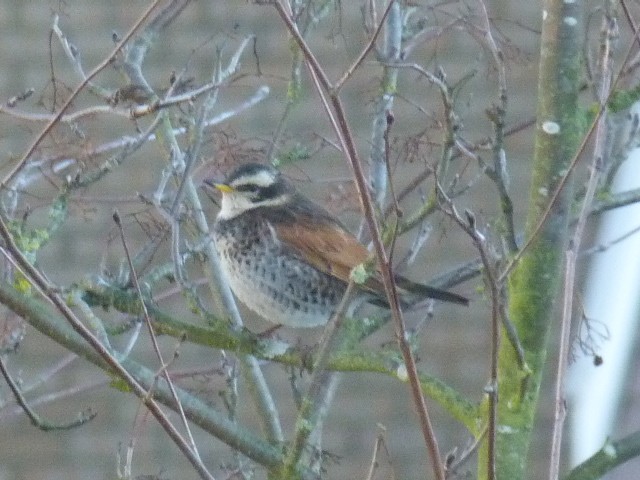
Dusky Thrush, Leigh, Greater Manchester (Photo: Ian Reynolds)
As if this wasn't enough, an unusual set of circumstances unfolded in Devon when a member of public reported an unfamiliar bird to the regional RSPB office. It had been found dead, hanging by a leg from a bush in a Dartmoor garden on 24th. The description, incredibly, fitted a first-winter American Purple Gallinule, and a visit by the assistant county recorder confirmed the identification. The bird was duly photographed and packed off to the Natural History Museum, where both of the previous two records reside. The first was an emaciated bird found in the middle of the road in Hugh Town, St Mary's (Scilly) in November 1958, which died in care two days later, and the second was found dead in a garden in Old Warden (Bedfordshire) in April/May 2008.

American Purple Gallinule, Dartmoor, Devon (Photo: Julia Harris)
Other megas included many of the year's long-stayers, including Norfolk's Lesser White-fronted Goose still at Cantley and Buckenham Marshes, Co Mayo's American Coot at Termoncarragh Loch, Cornwall's Pacific Diver remaining off Marazion, and in Co Cork both the Pied-billed Grebe at Little Island and the House Crow at Cobh were reported, the grebe having not been seen since 2nd January.
Two adult white-morph Snow Geese remained, at Greyabbey (Co Down) and Craobh Haven (Argyll), but a blue morph reported at Curry Moor (Somerset) on 20th–21st appeared to be a hybrid. Ross's Geese remained at Rockcliffe Marsh (Cumbria), reported on 26th, and there were the two Norfolk birds, regularly seen around Holkham Marsh and Haddiscoe Marsh all week. We don't feature Ruddy Shelduck every week, but this week there were two reports of singletons, at Castle Marsh (Suffolk) on 20th and Venus Pool (Shropshire) on 21st–23rd.

Ruddy Shelduck, Venus Pool NR, Shropshire (Photo: Jim Almond)
The usual scattered Black Brants were again reported, with singletons in Dorset, West Sussex, Isle of Wight and Norfolk, and two birds at Hoo Flats (Kent) on 24th and Bawdsey (Suffolk) on 25th. A new Red-breasted Goose in Hampshire was well received; first seen with Barnacle Geese at Hill Head on 20th, it then moved to the Brownwhich/Chilling area over 20th–26th, and was also seen briefly from Titchfield Haven on 24th. Other geese perhaps of interest were a single Richardson's Canada Goose still at Loch Gruinart, Islay (Argyll) on 21st, and the presumed escaped Lesser Canada Goose again at Wigg Island (Cheshire) on 21st.
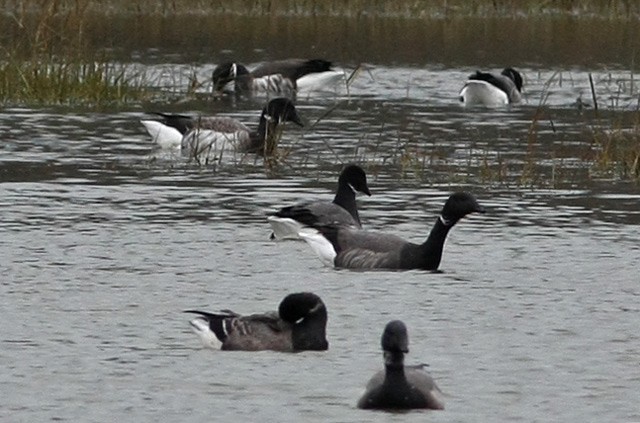
Black Brant, Bembridge Harbour, Isle of Wight (Photo: Kris Gillam)
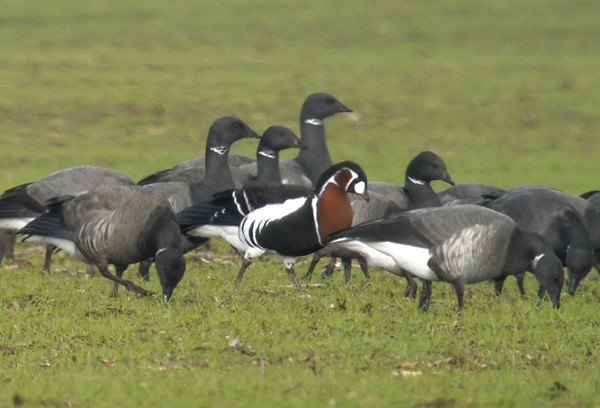
Red-breasted Goose, Brownwich and Chilling, Hampshire (Photo: Andy Johnson)
Two of Ireland's Ferruginous Ducks weren't reported, with just one at Lurgan Park (Co Armagh) again on 24th. The East Anglian birds remained, though, the female at Cockshoot Broad (Norfolk) and the female/first-winter at Needham Market (Suffolk) all week. The Ring-necked Duck remained at Cowpen Bewley (Cleveland), with others also still at Talley Lakes (Carmarthen), Lough Gash Turlough (Co Clare), Loch Elix (Highland) and Bosherston Lily Ponds (Pembrokeshire). There were also three new birds, all drakes, at Lough Money (Co Down) on 22nd–24th, Drumgay Lough (Co Fermanagh) on 22nd and Gwithian (Cornwall) on 26th.
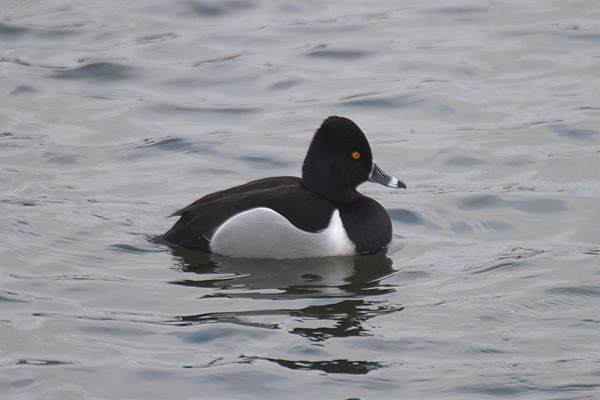
Ring-necked Duck, Cowpen Bewley, Cleveland (Photo: Tristan Reid)

Ring-necked Duck, Bosherston Lily Ponds, Pembrokeshire (Photo: Richard Stonier)
Numbers of Green-winged Teal dropped again, with just seven birds reported. One was still at Slimbridge (Gloucestershire) to 20th, with another reappearing at Inner Marsh Farm (Cheshire) on 26th. New birds were at Hodbarrow RSPB (Cumbria) on 22nd–24th and Covenham Reservoir (Lincolnshire) on 26th, with one-day birds at Tacumshin (Co Wexford), Congleton (Cheshire) and Rossie Bog (Fife). The two long-staying drake American Wigeon were still at Cley Marshes (Norfolk) and Rutland Water, with another still at Udale Bay (Highland) to 22nd. There was then a rush of new birds, all drakes, seen at Tacumshin (Co Wexford) on 23rd, Culswick (Shetland) on 25th–26th and Martnaham Loch (Ayr) on 25th. The same three Lesser Scaup all remained during the week, at Slimbridge (Gloucestershire), Dozmary Pool (Cornwall) and Cosmeston Lakes (Glamorgan).
In Scotland, the two drake Surf Scoters remained, reported off Ruddon's Point (Fife) on 22nd and Ferny Ness (Lothian) on 23rd–24th. The other long-stayer was the female still off Dawlish Warren (Devon), and a first-winter drake at Great Island (Co Cork) on 22nd–23rd followed a female there earlier in the winter. Scotland also held onto its three King Eiders, with a pair at West Voe of Sumburgh (Shetland) to at least 24th and a drake at Burghead (Moray & Nairn) on 22nd.
Good numbers of sites continued to hold Smew, the furthest north being a redhead at Loch of Tingwall (Shetland) and Irish birds at Quoile Pondage (Co Armagh), Kenmare (Co Kerry) and two drakes at Inch Island Lake (Co Donegal). The only notable counts were 10 at Paxton Pits (Cambridgeshire), nine at Rutland Water, eight at Eyebrook Reservoir (Leicestershire) and eight at Dungeness (Kent).
With no reports from Carbis Bay, Cornish Balearic Shearwaters were reported again from the SeaWatch SW watchpoint at Porthgwarra, with two on 20th and five the next day. The only other was past Flamborough Head (East Yorkshire) on 22nd. The only Sooty Shearwater reported was one lingering off Portland Bill (Dorset) on 26th. Also at sea, another Great Shearwater was reported, past Filey (North Yorkshire) on 23rd, and a White-billed Diver was off Port Skigersta, Lewis (Outer Hebrides) on 22nd with two in Shetland on 26th, off Fetlar and Bluemull Sound. Slightly more common, but equally noteworthy, were the 12,000 Razorbills that went east past Durlston (Dorset) in just one hour on 25th.
For the first time for seemingly an age, there were no reports of Glossy Ibis this week. There are still plenty of Great White Egrets hanging around, though, with an impressive six at Ham Wall (Somerset). Elsewhere, there were two reports from Kent, two from Hampshire, two from Northamptonshire and one from Suffolk. The Cattle Egret remained on Grouville Marsh (Jersey), reported on 21st, though one reported from Aber Ogwen (Gwynedd) on 24th was later reidentified as a Little Egret.

Great White Egret, Thorpeness, Suffolk (Photo: Andy Thompson)

French-ringed Great White Egret, Ham Wall RSPB, Somerset & Bristol; more details here (Photo: Mick Colquhoun)
Most of the small groups of Spoonbills remained, including eight in Dorset, seven in Devon, three in Cornwall and two on the Isles of Scilly. Other singletons were at Courtmacsherry (Co Cork) on 20th and at Cley Marshes (Norfolk) on 26th. Worthy of mention are two Great Bustards from the reintroduction programme seen again at Langton Herring (Dorset) on 20th.

Great Bustard, Langton Herring, Dorset (Photo: Tony Hovell)
Most of the remaining Rough-legged Buzzards were in the east, from North Yorkshire to Norfolk. In the north, single birds were at Finstown (Orkney) on 25th, and in Shetland one remained at Toft and two were reported again from Valla Field, Unst. Elsewhere, a probable was reported at Radley Gravel Pits (Oxfordshire) on 25th. There was no mention of the Co Wexford Northern Harrier this week, but one was still seen in the Thornham/Titchwell area of Norfolk. The probable juvenile at Bartinney Downs (Cornwall), reported on and off all week, was far less obliging and never gave views good enough to secure a positive identification. The only other raptors of note were the White-tailed Eagle at Hordle (Hampshire), reported again on 23rd and 25th — though bizarrely it does seem to be able to disappear for days at a time — and the possible Tundra Peregrine Falcon again at Amble Marshes (Cornwall) on 26th.
Dorset's Long-billed Dowitcher was only reported from Lodmoor on 20th, so may have gone wandering again.
Glaucous Gulls were reported from many locations, though primarily singletons in the north and east. In the west, a juvenile was at Sennen Cove (Cornwall) on 25th and possibly two were at Trench Pool, Telford (Shropshire) on 22nd–24th. Iceland Gulls were better spread across the country, though Wales and the southwest missed out. The only Irish bird reported was a juvenile on the Cashen Estuary (Co Kerry) on 25th. Two were in the roost at Swillington Ings (West Yorkshire) on 21st, two remained at Stromness (Orkney) and two at Strathclyde Loch (Clyde) were joined by a Glaucous Gull on 23rd. Of more interest were the first-winter American Herring Gull again at Donnybrewer (Co Londonderry) on 23rd and a possible adult Azorean Yellow-legged Gull at Sennen Cove (Cornwall) on 26th.

American Herring Gull, Donnybrewer, Londonderry (Photo: Derek Charles)
As usual, several of the long-staying Ring-billed Gulls were still present. There were further reports of new birds, though, including a first-winter at Blashford Lakes (Hampshire) on 22nd, an adult reported from Sker Point (Glamorgan) on 22nd, and further adults at Llys-y-Fran Reservoir (Pembrokeshire) on 23rd, Blennerville (Co Kerry) on 24th, Christchurch Harbour (Dorset) on 24th and Tarbert (Co Kerry) on 26th. There were also an adult and second-winter at Donnybrewer (Co Londonderry) on 23rd and two adults at Nimmo's Pier (Co Galway) on 24th, along with the usual Forster's Tern. Some debate this week centred around a bird photographed at Birkdale (Lancashire) on 22nd. It superficially looked like a Franklin's Gull, but a few features didn't quite add up. It now looks as if this bird was a 'hooded' Common Gull, which can look quite unusual at the best of times. Another rather interesting gull was belatedly reported from Arklow (Co Wicklow), present on 16th. A second-summer, it showed some characteristics of Kumlien's Gull but also suggested Thayer's Gull.
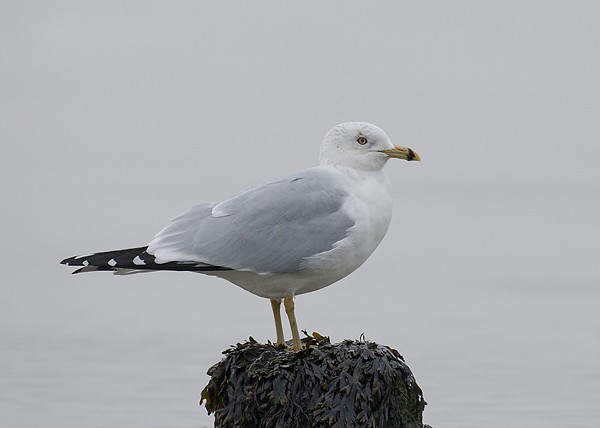
Ring-billed Gull, Westcliff-on-Sea, Essex (Photo: Mick Southcott)

Common Gull, Birkdale, Lancashire (Photo: Mark Saunders)
The regular winter groups of Shore Larks included up to 21 at Gibraltar Point (Lincolnshire), 13 at Dingle Marshes (Suffolk) with 40 Twite and 12 Snow Bunting, 11 at Cley (Norfolk) and five at John Muir Country Park (Lothian). New birds included three at Coldharbour Lagoon (Kent) on 20th and one at Warton, near Carnforth (Lancashire) on 22nd. Waxwings were still rather concentrated from the home counties to northwest England. Those still out on a limb included one in Stornoway, Lewis (Outer Hebrides) on 21st, one at Raheen (Co Limerick) on 23rd, three at Tramore (Co Waterford) on 22nd–23rd and seven at Broadsands (Devon) on 25th. The largest flock was 250 still at Lakeside Retail Park, West Thurrock (Essex).

Waxwing, Woodbridge, Suffolk (Photo: Bryan Wright)

Waxwing, West Thurrock, Essex (Photo: Des Newton)
One spurious report involved a Hoopoe heard at Lark Rise (Oxfordshire) on 23rd, though the fact this was only heard on the TV led to suggestions this may have been recorded elsewhere. There's been a distinct shift to the south and west of Great Grey Shrikes over the last few weeks. There are now no birds from East Yorkshire to Kent, but at least six in Wales and five in the southwest.

Great Grey Shrike, Netherley, Aberdeenshire (Photo: Joseph Nichols)
Three Coues' Arctic Redpolls remained at Rainton Meadows (Durham) all week with up to 30 Mealy Redpolls. One also remained at The Lodge, Sandy (Bedfordshire) to at least 24th, with new birds reported at Fairburn Ings (West Yorkshire), with 15 Mealy Redpoll on 21st and a possible with 11 Mealies at Derwent Walk Country Park (Durham) on 23rd.

Coues' Arctic Redpoll, Rainton Meadows DWT, Durham (Photo: Frank Golding)
Coue's Arctic Redpoll, Rainton Meadows, Durham (Film: FoghornsBirdingVideo).
Small numbers of Lapland Buntings persisted at around 10 sites, with up to 25 at West Mersea (Essex), 17 at Breydon Water (Norfolk) and 10 at Weybourne (Norfolk). A large flock was then attracted to a baited area at Burgh Castle (Norfolk), with an impressive 74 there on 25th. Furthest north were two still at Kilminning (Fife) on 22nd and furthest south were seven at Sturt Pond (Hampshire) to 24th.
The most interesting of the races were mostly long-stayers. In Kent, five Northern Long-tailed Tits were still at Dymchurch and two were at Kingsdown on 22nd only, and the Central Asian Lesser Whitethroat was at Drogheda (Co Louth) to at least 23rd. There were also more reports of 'Nordic' Jackdaws, with two at Beech (Staffordshire) on 22nd–23rd and singletons at Ramsey (Isle of Wight) on 24th and Killingworth (Northumberland) on 26th. There was then just one Northern Bullfinch, at Firths Voe (Shetland) on 26th.
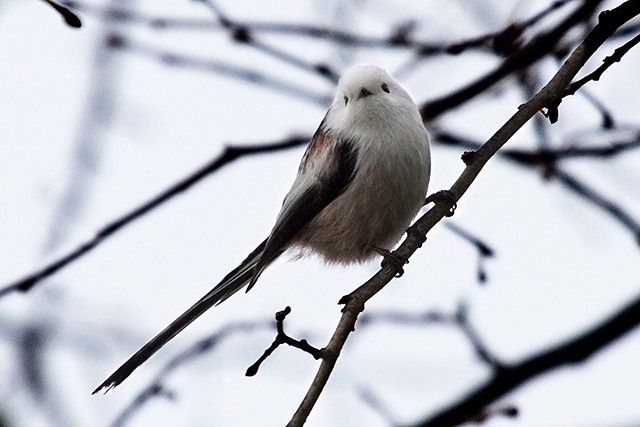
Northern Long-tailed Tit, Dymchurch, Kent (Photo: Mike Gould)
Photo of the Week: 20th–27th January 2011

Short-eared Owl, undisclosed site, Lincolnshire (Photo: Pauline Greenhalgh)
Pauline Greenhalgh is a well-known character within the BirdGuides community; as well as being generous with her comments on other photographers' images, she is always open about the trials and tribulations of her own journey to becoming a better bird photographer. As many people have found, this journey involves a lot more than just buying expensive equipment and heading out into the field. We are delighted to see the way Pauline is now able to get good shots even in difficult conditions, such as the flight shots of a Short-eared Owl she took in dull weather in Lincolnshire this week. Getting sharp photos of birds in flight is always a challenge, but low light levels make this even more difficult because camera autofocus systems struggle to lock on, especially against 'busy' backgrounds. Overcoming the odds, though, Pauline managed to keep focus on the hunting owl as it flew towards her, staring yellow eyes conveying its intense concentration. A close crop makes the most of the face and body detail, and the positioning of the bird in the left half of the frame nicely provides space for it to fly into.
Other notable photos
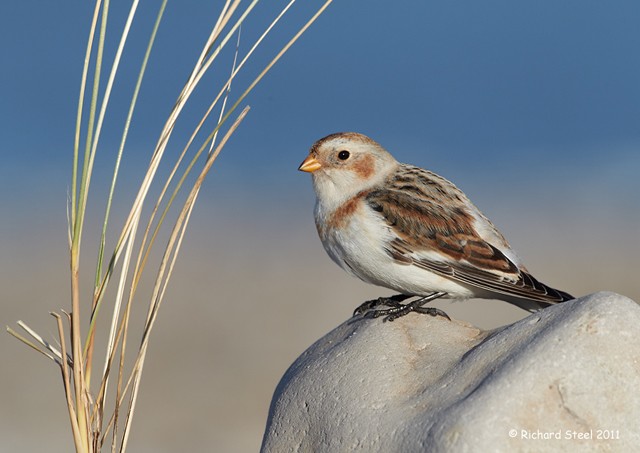
Snow Bunting, Kinmel Bay, Conwy (Photo: Richard Steel)

Bullfinch, Ebbw Vale, Gwent (Photo: Mike Warburton)

Barn Owl, undisclosed site, Lancashire (Photo: David Cookson)

Ptarmigan, Cairn Gorm, Highland (Photo: Marcus Conway - ebirder)
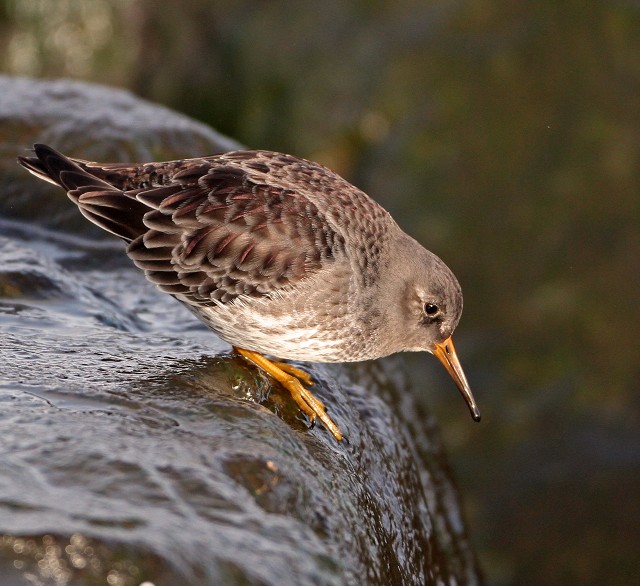
Purple Sandpiper, Lowestoft, Suffolk (Photo: Ian Clarke)

Long-tailed Tit, East Linton, Lothian (Photo: James Wood)

Azure-winged Magpie, Spain (Photo: Steve Fletcher)
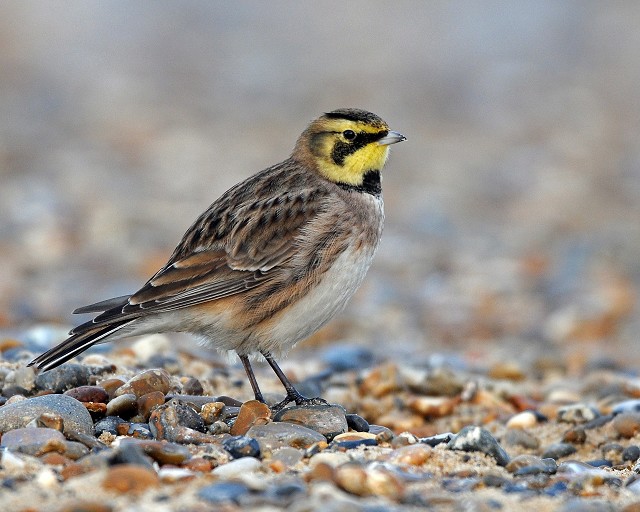
Shore Lark, Dingle Marshes SWT, Suffolk (Photo: Jon Evans)

Red Grouse, Lecht Ski Centre, Aberdeenshire (Photo: Alan Sinclair)

Cetti's Warbler, UEA Broad, Norfolk (Photo: Mark Skipper)

Shoveler, undisclosed site, Cheshire (Photo: Steve Round)

Common Buzzard, Robroyston Park LNR, Clyde (Photo: Glasgowstef)

Blue Tit, Belgium (Photo: Rudi Debruyne)

Brambling, undisclosed site, Herefordshire (Photo: Tom Melton)

Common Kingfisher, Grove Ferry NNR, Kent (Photo: Steve Ashton)

Fieldfare, Barton-upon-Humber, Lincolnshire (Photo: Jamie MacArthur)

Waxwing, Shrewsbury, Shropshire (Photo: Jim Almond)
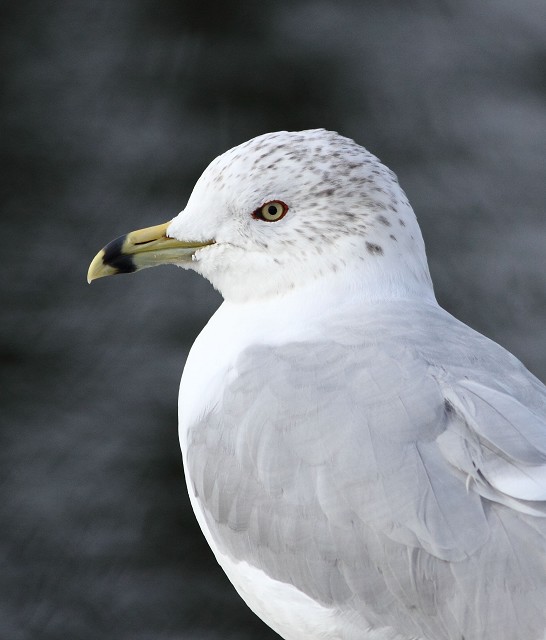
Ring-billed Gull, Gosport, Hampshire (Photo: Ian Williamson)

Mute Swan, Slimbridge WWT, Gloucestershire (Photo: Chris Grady)

Great Tit, Sandy Point, Hampshire (Photo: Andy Johnson)

